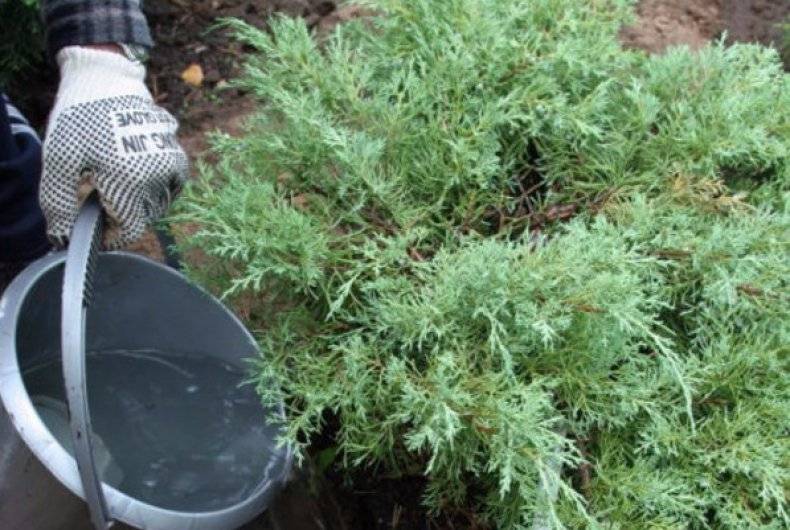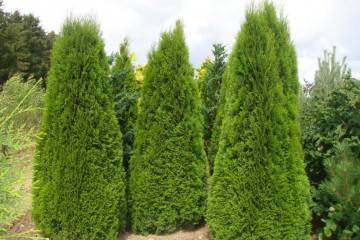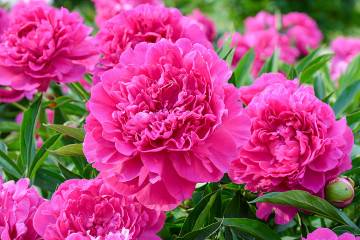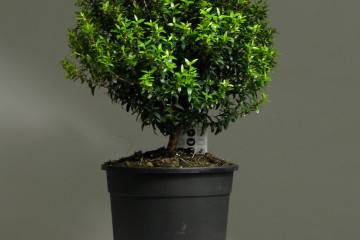Juniper - shrub or tree, how to propagate and plant it
To figure out whether a juniper is a coniferous or deciduous tree, you need to carefully study its botanical description. It is mistaken for a deciduous tree because the needles are very soft and small, so confusion often arises.
Juniper - shrub or tree
Juniper is both a shrub and a tree. What type of plant it belongs to depends on its appearance. A plant is called a creeping shrub if it reaches 40-50 cm.If the height is 1-3 m, it is a shrub. If more than 3 m - a tree.
Origin and appearance of junipers
The answer to the question whether a juniper is a coniferous or deciduous tree will be this: it is a coniferous tree of the cypress family. The appearance depends on what type of plant the juniper belongs to. It can be either a tree or a shrub. Trees have a conical crown. Shrubs are usually spherical in shape. The needles are dark green in color, but there are varieties with a yellow color.
The appearance depends on the variety. Bushes and trees can vary in height and color of needles, as well as in the shape of the crown.
Popular types
The varieties of thuja and juniper are very similar in appearance to each other. It is easy to confuse them. Both species belong to the same cypress family.
Creeping juniper
The creeping or creeping juniper is characterized by a small height of adult plants, which does not exceed 1-1.5 m. It grows well in width up to 2-3 m. One of the popular varieties of this species is Cossack.
Juniper cypress
It grows in height up to 12 m. The shape of the crown is conical. The needles are of a rich green hue. Juniper of this species and thuja are very similar to each other. Often used for landscaping gardens.
Horizontal Juniper Lemon Glow
This variety was developed in the United States from several species of wild horizontal juniper varieties. The height of an adult plant is 40 cm. The crown grows up to 2 m wide. The variety reaches this size only by the age of 15. The needles are yellow-green in color.
Transplant after purchase in the garden
You can transplant juniper seedlings into open ground immediately after purchase. First, you need to choose a place and prepare the soil so that the seedling takes root as quickly as possible.
What is needed for landing
For landing you will need:
- drainage;
- mineral fertilizers or wood ash;
- wooden stake;
- shovel.
You will not need a lot of devices for planting a seedling in open ground. It is more important to prepare the soil and choose the right planting site.
How to choose the best soil
Before planting seedlings, you need to find the right place. Junipers should not be surrounded by tall trees if they are shrubs. It can be planted both in sunny areas and in partial shade.It is good if the bush is in the sun for the first half of the day, and in the shade in the late afternoon.
The soil should warm up well. Thanks to this, the needles will not turn yellow. The culture prefers loose and sandy soil.
Step by step process
Planting seedlings is very easy. The main thing is to take into account all the nuances so that the plant takes root in a new place as quickly as possible and does not hurt. A few weeks before planting, the soil is dug up and mineral fertilizers are applied. The soil can be dug up with manure.
How to plant a juniper:
- Dig a hole. The depth and width depends on how developed the root system is.
- Pour a thick layer of drainage on the bottom of the pit.
- Drive a wooden stake into the centers of the hole. For the first time, a seedling will need to be tied to it until it gets stronger.
- Then put the seedling and dig in it with soil. During burial, care must be taken to ensure that the trunk is not deeply buried.
- Dig a small ditch around the hole to prevent water from flowing out.
At the end of planting, pour plenty of warm water over the hole. Previously, the soil can be sprinkled with wood ash to fertilize it.
How to plant a creeping juniper
You can plant a creeping juniper in the same way as any other variety. During planting, it should be borne in mind that this variety grows greatly in width, so you need to leave a lot of space, at least 3-4 m.
The planting process is very simple:
- Dig a hole
- Fill the bottom with drainage.
- Place a seedling in the hole.
- Dig in a young tree with soil.
- Water the plant abundantly with water warmed up in the sun.
Reproduction
The answer to the question of how to propagate a juniper at home is very simple: you need to use cuttings. Even a beginner can handle plant breeding in this way. Juniper seed is used only by breeders to obtain new species.
Propagation by cuttings
Reproduction of juniper by cuttings at home is applicable to both shrubs and trees. First you need to prepare the cuttings. In order to plant a plant in this way, cuttings are cut from trees that are more than 8 years old. Spreading plants are obtained from cuttings from the middle part of the crown. To grow a vertical tree, they are cut from the top. You only need to choose green cuttings.
The length should be up to 12 cm. Cuttings are cut so that a small piece of bark remains below.
How juniper multiplies at home:
- Cut off the needles from the bottom, leaving it only at the top.
- Put the cutting in a growth activator (Epin) for a day so that rooting is successful.
- Then it must be planted in prepared soil.
The soil is mixed from equal parts of peat, sand and expanded clay. You can add some charcoal.
Several cuttings are planted in one pot. The distance between them should be up to 8 cm. After planting, the soil is poured with water and a glass cap is put on top. The temperature should be from 23 degrees for rooting to go faster.
The hood can be opened several times a week to water the soil and ventilate the seedling to prevent mold from forming. You can transplant cuttings into open ground after they give a well-developed root system and get stronger.
Care
It is difficult to grow a healthy tree without regular maintenance.Fortunately, the juniper is quite unpretentious to care for, so it does not require a lot of effort and time.
Watering mode
The cypress juniper, like other varieties, can withstand prolonged droughts. The plant needs watering in the spring, when the active growth of shoots begins. In summer, the amount of soil irrigation can be reduced. But if it's hot, then you need to water the tree at least 2-3 times a month.
Top dressing
It doesn't matter if the juniper is a tree or a shrub, each variety needs regular feeding. In the spring, Nitroammophos is introduced into the soil. Once a month throughout the summer, you can fertilize the soil with complex mineral fertilizers and organic matter.
From organic fertilizers, wood ash, rotted manure or infusions of weeds are suitable. Also, top dressing is necessary if the tree grows slowly.
Features of summer care
In summer, bush care can be minimal. Do not forget to regularly water and weed the soil from the grass. It is also important not to forget about feeding. They are brought in once a month. You can increase the amount of fertilizer if the juniper grows slowly or is sick with something. Formative pruning can be done in summer if necessary.
Features of winter care
Towards the end of August, any additional fertilizing ceases to be introduced into the soil. By mid-autumn, the soil is mulched with peat, sawdust or manure. Although you can do without mulching. The plant tolerates even severe frosts normally. But what exactly needs to be done is to bend the branches to the ground so that they do not break under the weight of the snow. This should be done gradually over several weeks.
Juniper is an unusual plant that can be both a shrub and a tree. Its healing properties have been known since ancient times, and furniture made from such wood has a pleasant coniferous aroma.




















